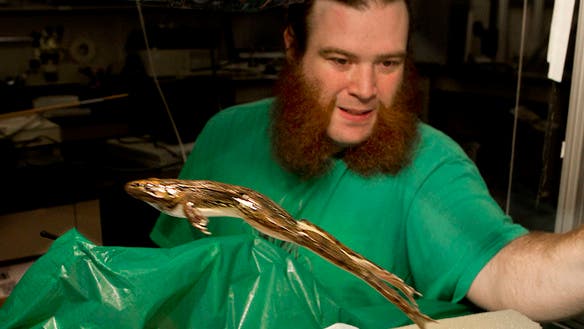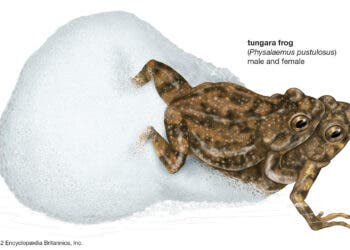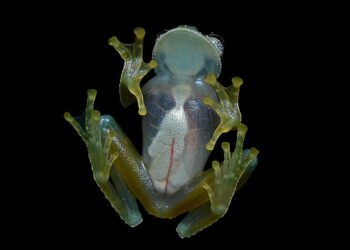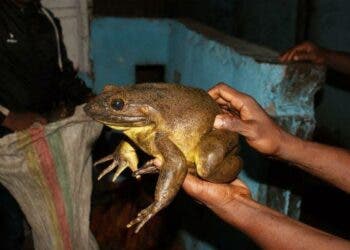
Frogs are able to leap across huge distances, multiple times greater than their body length, however their leg muscles are only a fraction as powerful as they should be to support these kind of jumps. A new study by researchers from Brown University shows that this ability doesn’t come from leg muscles, but lies in their tendons which stretch and load, allowing the frog’s legs to basically function like springs.
Scientists have long pondered this dilema, however advanced observational techniques offered Henry Astley and Thomas Roberts the chance to film frogs jumping at an incredible 500 frames per second, and study even the most subtle moves of their leg muscles. For their observation to become effective, the pair inserted metal beads into the shin, ankle and leg of a quartet of frogs, which helped them form a high frame rate X-ray footage.
The secret, it seems, lies in the frogs’ tendons. As the frog preps his jump, energy is transfered from the leg muscles to the tendons, which pre-load and then release the energy in a burst, which makes for the high characteristic leaps. Sure, the leg muscles are also powerful, a quarter of a frog’s mass is located in the legs for that matter, however without its tendons remarkable streching ability, high leaps like those exhibited by frogs would be impossible.
“As the frog readies itself to leap, its calf muscle shortens. After about 100 milliseconds, the calf muscle stops moving, and the energy has been fully loaded into the stretched tendon. At the moment the frog jumps, the tendon, which wraps around the ankle bone, releases its energy, much like a catapult or archer’s bow, causing a very rapid extension of the ankle joint that propels the frog forward. The entire jump — from preparation to leap — lasts about a fifth of a second, the experiments showed. Other frog species jump much faster,” state the researchers in their report.
Hopefully this particular research will offer more insight into the relation between the muscles and tendons in various animals. For certain, studies of other big leapers like the grasshoper, fleas, or the guinea fowl will follow.
The study was published in journal Biology Letters.






